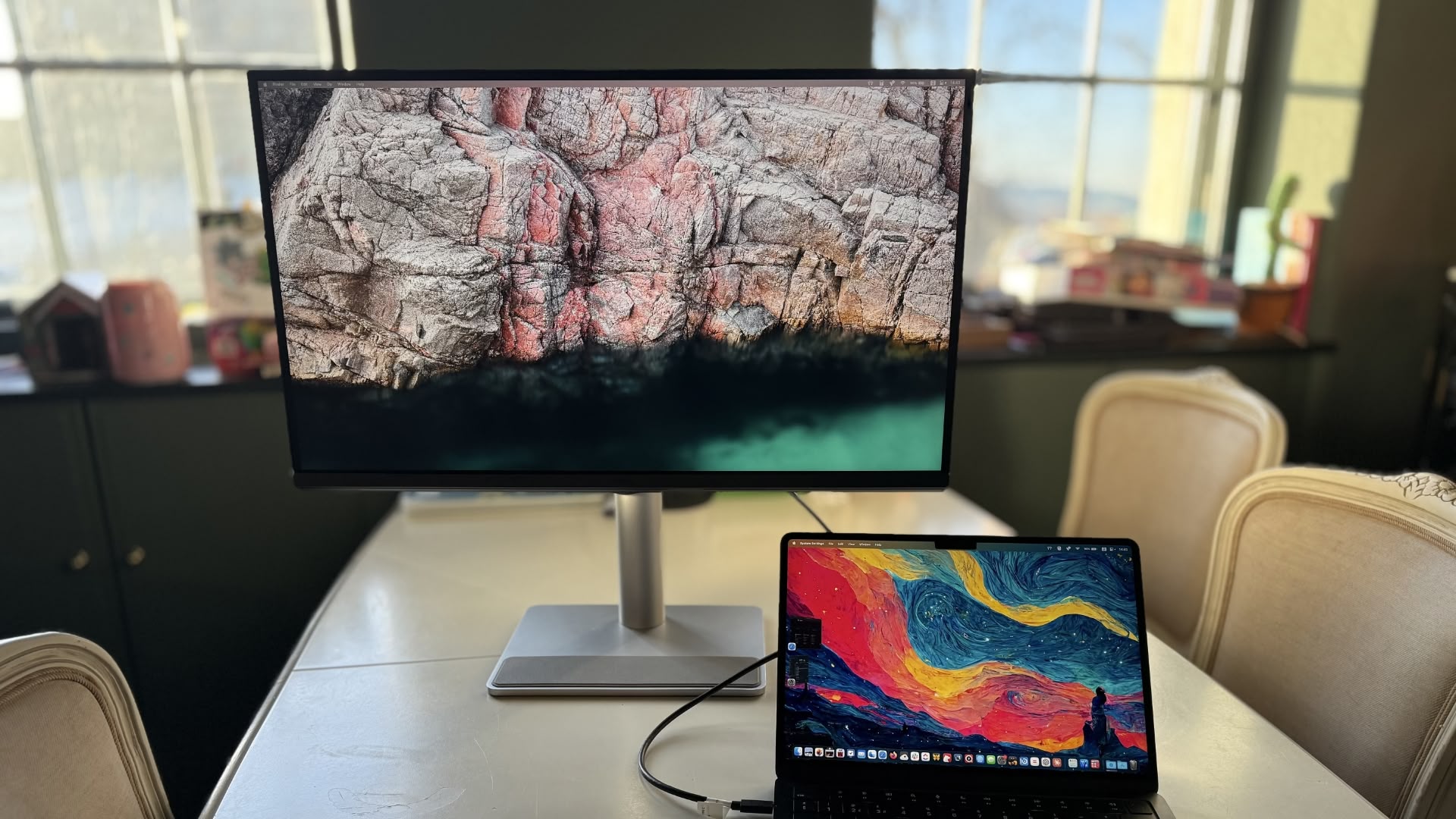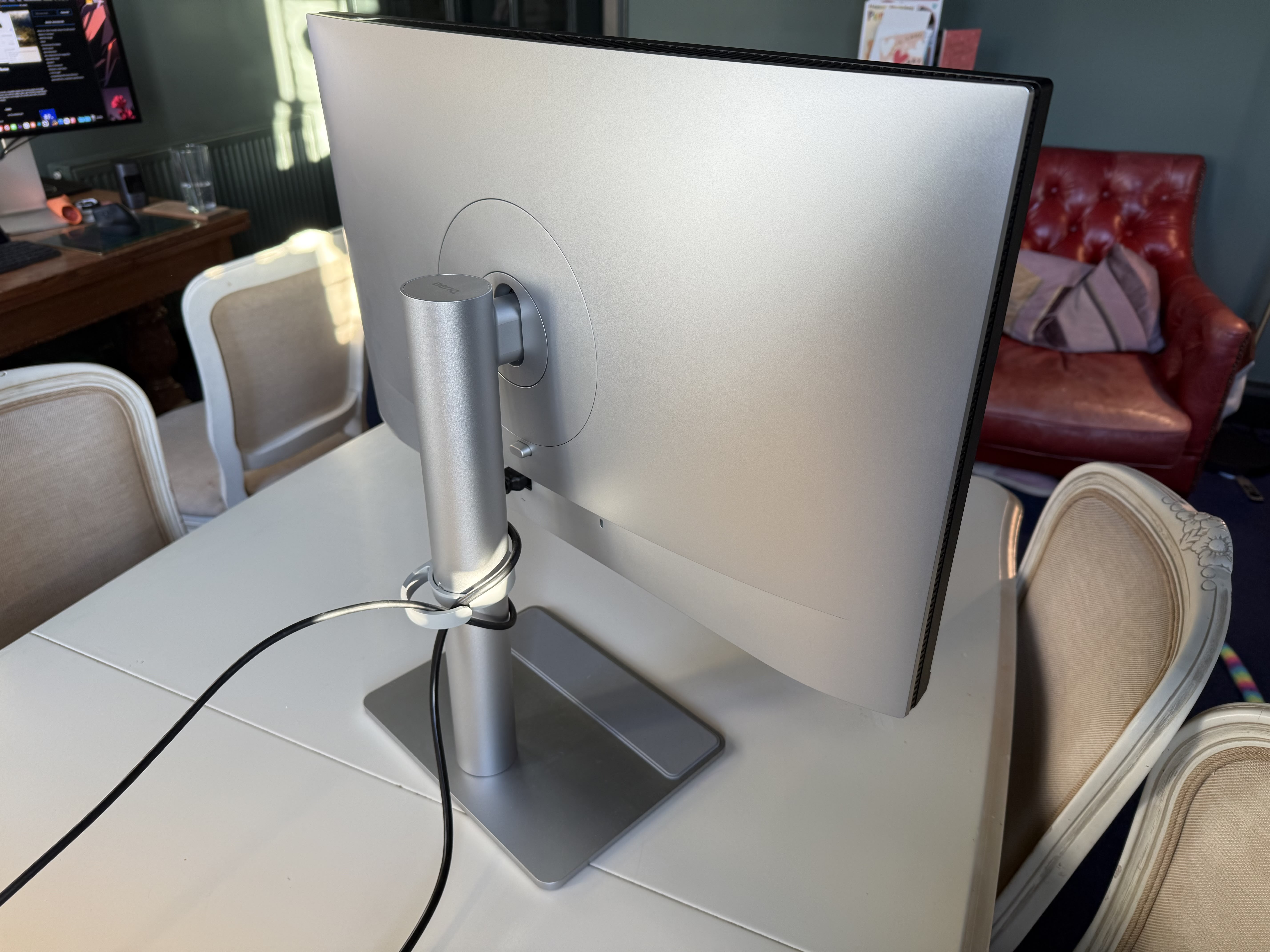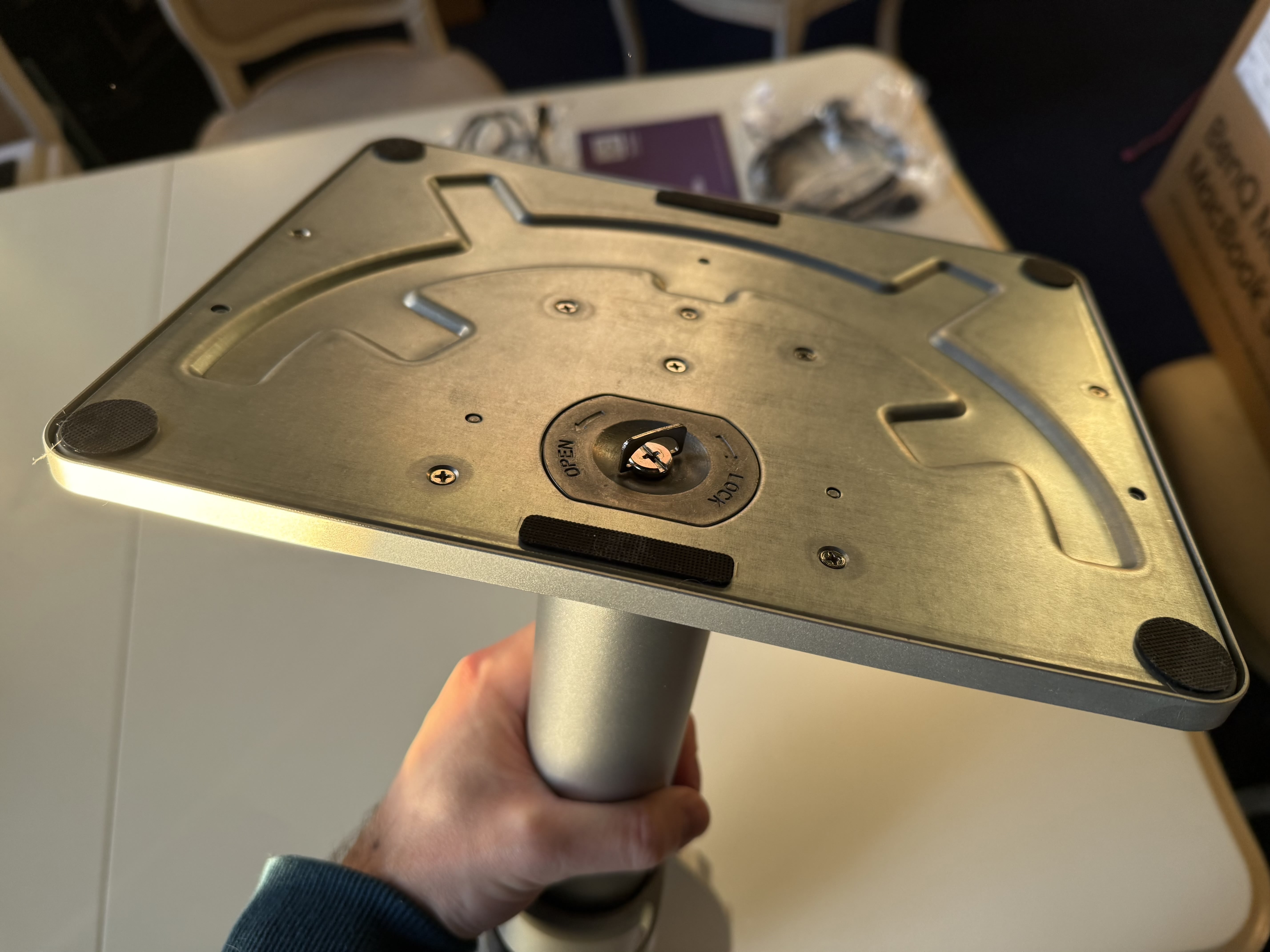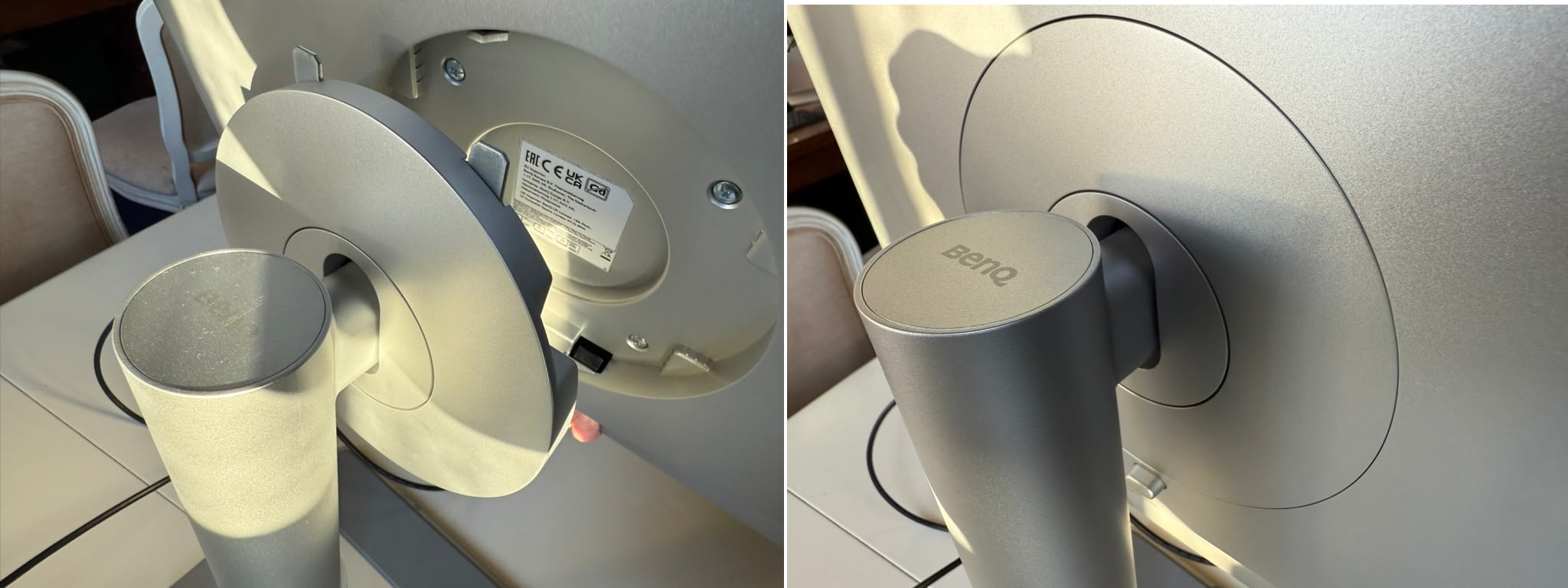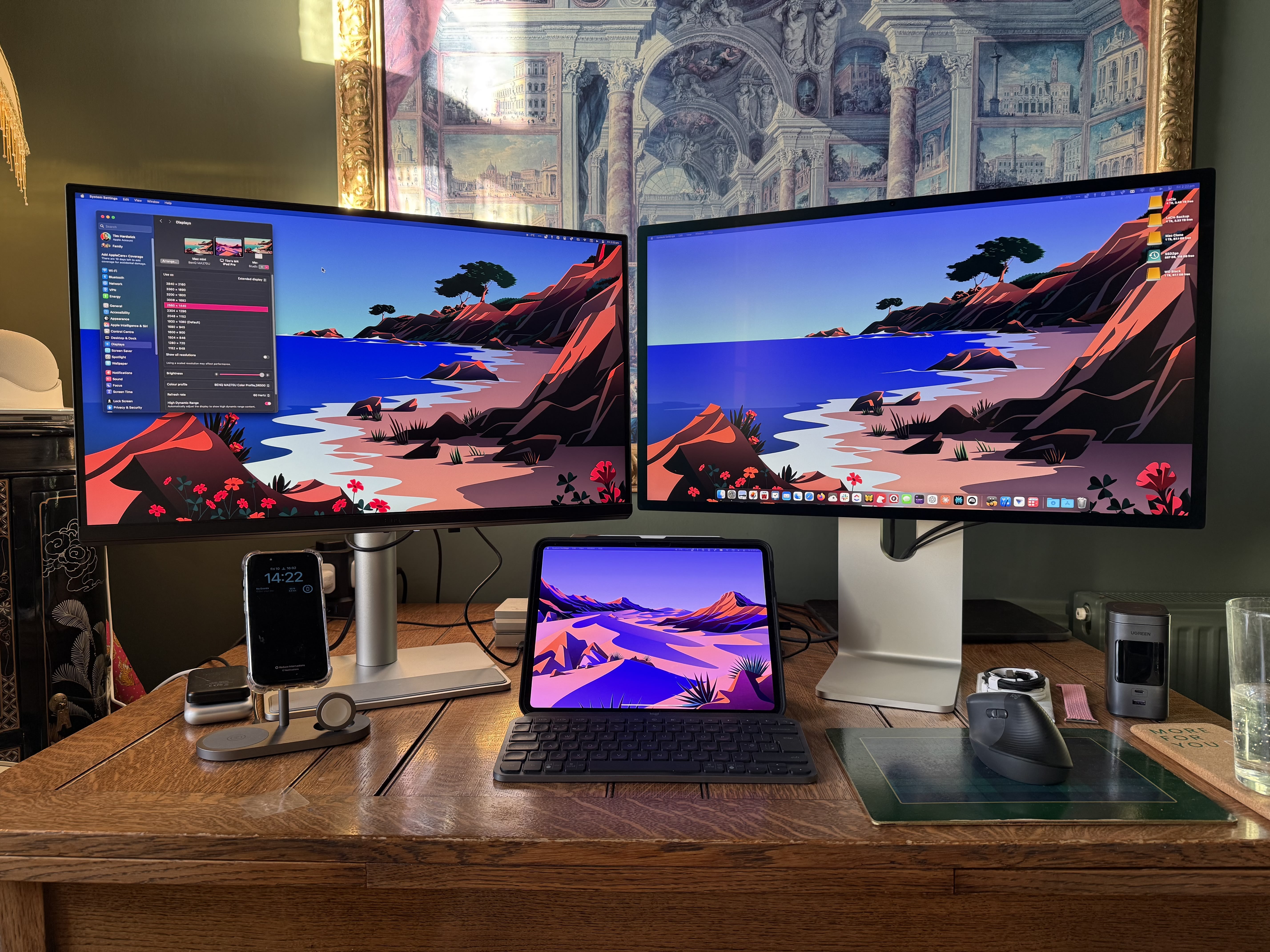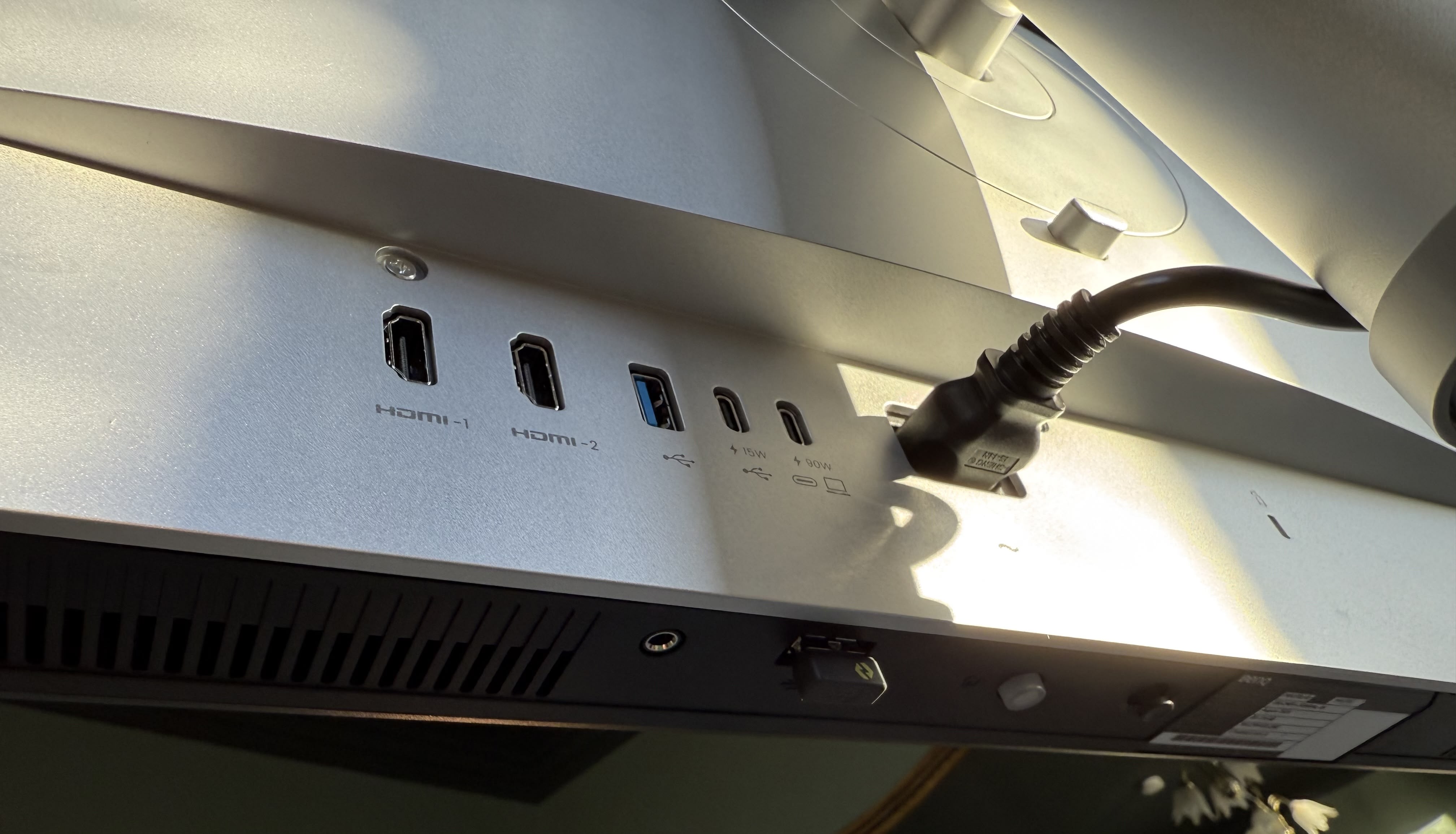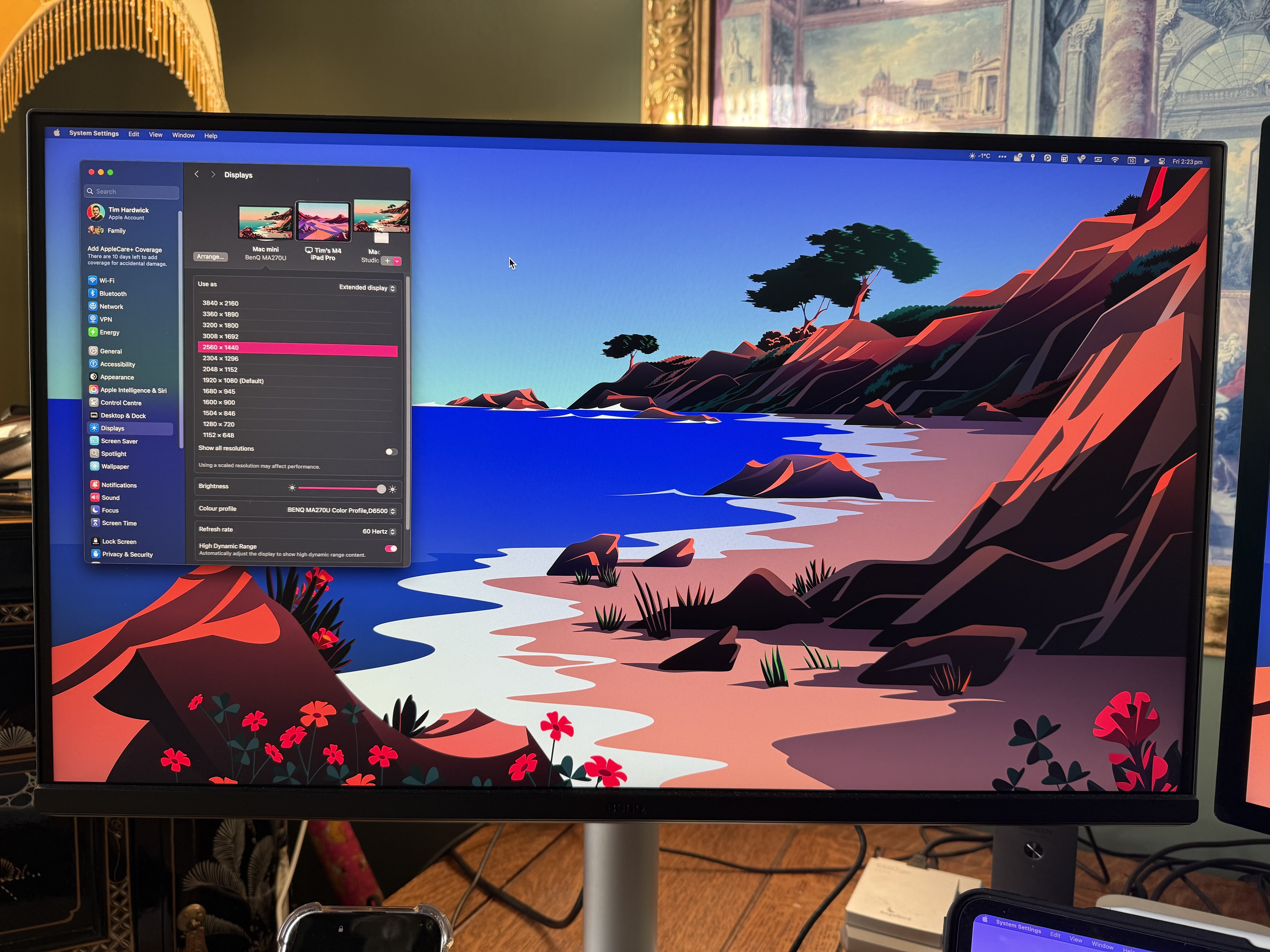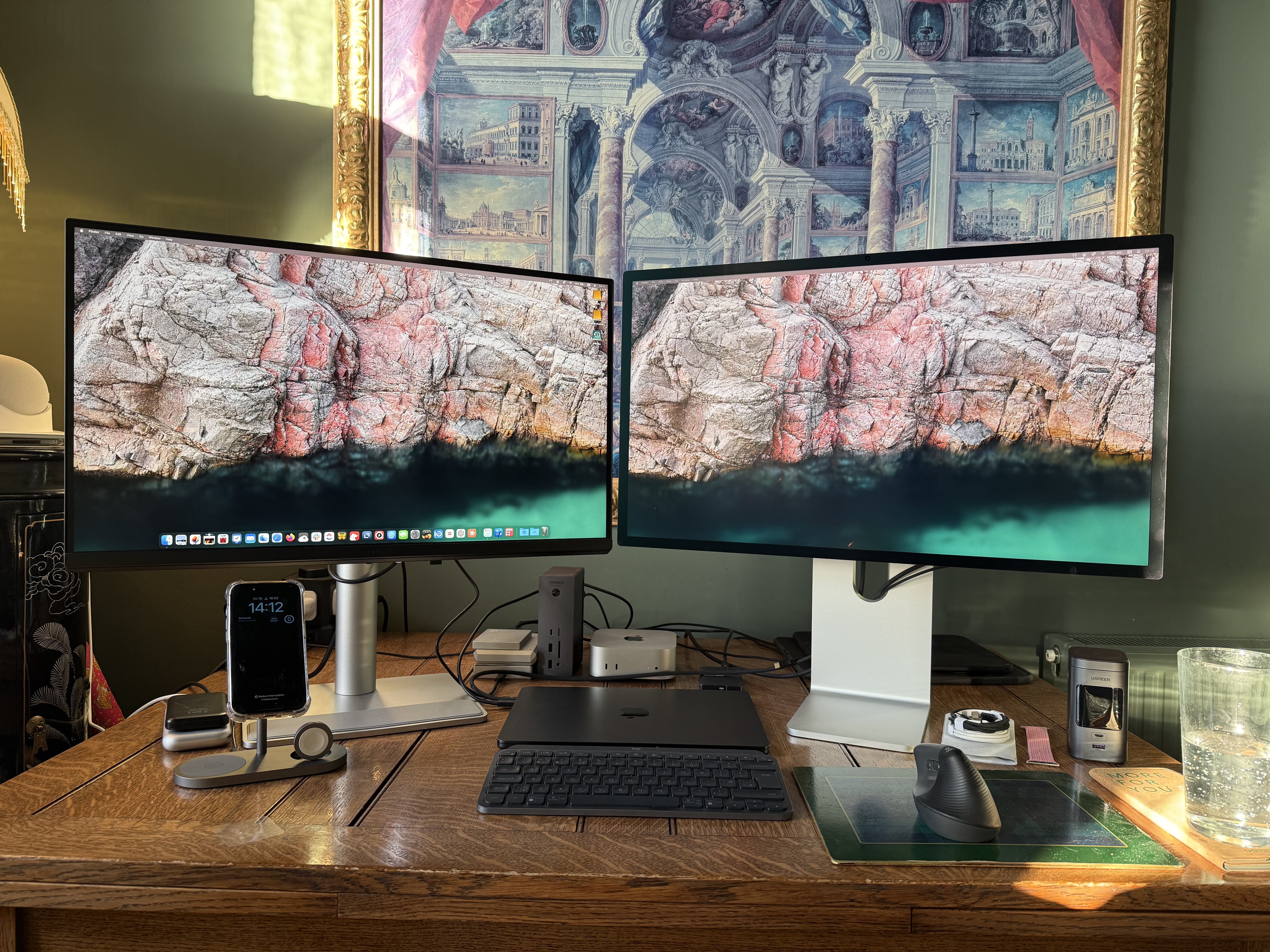![]()
Any typical search for a consumer Mac monitor inevitably leads to the Apple Studio Display – a seamless but prohibitively expensive option for most users at $1,599. That's where BenQ's MA270U steps in, offering Mac-native features at a much more palatable $459.99.
Unlike typical PC monitors that often feel retrofitted for Mac compatibility, this is a 27-inch 4K display that arrives ready for MacBook use out of the box, complete with built-in color matching, keyboard integration, and even Focus mode support. But can a third-party monitor truly deliver Apple-like integration without the Apple price tag?
Key Display Specifications
- 27-inch IPS panel with Nano Matte coating
- 3840 x 2160 (4K) resolution
- 400 nits peak brightness
- 1200:1 native contrast ratio
- 99% sRGB, 95% P3 color gamut
- 60Hz refresh rate
- 5ms response time
- HDR10 with VESA Display HDR 400 certification
- 178° viewing angles
Design and Build Quality
Peeling the protective material off the "Nano Matte" IPS panel reveals a thin black bezel around the top and sides, and a slightly thicker chin with the BenQ logo centered in an inoffensive, almost hidden black finish. The rear of the display is plastic with a metallic finish that curves outwards slightly, while the stand is a brushed metal pipe about 2.5 inches in diameter.
Assembly is extremely simple and requires no tools. You just click the neck of the stand to the back and then use the key-screw to fasten on the rectangular base, which includes a rubber strip along the front for placing accessories.
Once the monitor was set up alongside my Apple Studio Display, BenQ's design perhaps inevitably looked a little dated. The monitor sports clean lines and thin bezels, but its predominantly plastic construction lacks Apple's signature sophistication. The aluminum-effect back cover tries to bridge this gap, though it can't match Apple's minimalist refinement and keen eye for curves and lines.
That said, build quality impresses where it matters. The steel neck provides rock-solid stability, while the soft-touch area on the base is a nice afterthought. While it won't win any design awards in my book, the construction feels reassuringly robust.
Connectivity and Setup
Connectivity-wise, the monitor is fairly well-accommodated round the back. The 90W USB-C port connects and provides power to your Mac, while an additional 15W USB-C port and one 7.5W USB-A port offer options for connecting other devices (in my case, a Bluetooth receiver for my mouse, and an external USB hard drive).
Crucially, the hub can provide power even when the display is off, so you can keep your MacBook and whatever else plugged in and charging regardless. There are also two HDMI 2.0 ports (sadly not 2.1), plus a headphone jack and an extra 7.5W USB-A port located under the panel, next to a glowing power button and a physical toggle to manually set brightness, volume, and display output.
Getting started couldn't have been easier. I plugged in the supplied USB-C cable and my MacBook Air instantly recognized the display and began drawing 90W of power from it. I also tried connecting to an M4 Mac mini, both directly and via a Ugreen Thunderbolt 4 dock, and had zero issues.
As I got comfortable with the setup, I was impressed by the flexibility of the MA270U's stand, offering a range of adjustments that make it easy to find your ideal viewing position. The height adjustment provides a generous 115mm of vertical travel, while the tilt mechanism allows the screen to move from -5° backward to 20° forward. Paired with 15° of swivel in each direction, you can fine-tune the display's position to minimize glare and maximize comfort. The robust stand keeps the display stable at any position, and the smooth pivot function rotates 90 degrees in either direction for portrait orientation viewing.
The built-in 3W speakers are adequate for system sounds but won't replace dedicated audio solutions – you won't be surprised to learn that they're noticeably inferior to MacBook speakers, and the less said about them the better.
Display Performance and Color Accuracy
Here's where the MA270U excels. The 60Hz panel's 3,840 x 2,160 resolution delivers crisp, vibrant visuals, while the 5ms response time is perfectly adequate (unless you're a hardcore FPS gamer). Colors pop without appearing oversaturated, and BenQ's color-matching technology is impressive – the difference between my MacBook Air's display and the MA270U was barely perceptible when using the recommended color profile. I even swapped out my Air for a MacBook Pro with a Liquid Retina XDR display, and only the brightness difference was visible. The monitor maintained consistent color reproduction across its 400 nits brightness range. Indeed, I was impressed with how good it looked alongside my Studio Display.
The Nano Matte panel handles glare admirably under normal conditions. However, direct sunlight remains challenging. It's not quite as effective as Apple's nano-texture glass option in this respect, but remember – that's a $300 upgrade on the Studio Display, which also boasts a higher 600 nits of brightness. One other thing worth mentioning is how fast the MA series monitor wakes from sleep – it impressively matched the speed of my Mac and the Studio Display.
Display Pilot 2 Software
...
Click here to read rest of article
Article Link:
Review: BenQ's Affordable MA270U 4K Monitor Is Made for MacBooks



